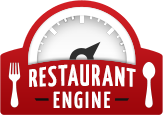How to Make Food Costs Projections For Your New Restaurant
This is a guest article written by Jessica Oman of Write Ahead. She’s a business plan writer, consultant, and trainer for entrepreneurs everywhere. Her free checklists for business launch and growth will help your company get from ‘idea’ to ‘open’ in record time – you can grab those here.
In the restaurant industry, cost control is critically important. Expensive ingredients, or very small orders from suppliers, can significantly drive up the cost of producing each plate you serve. But in order to keep your menu consistent and give diners what they expect without drastically raising prices, you might have to soak up those extra costs.
Meantime, your customers dine on, blissfully unaware that the sweat dripping from your forehead is not from the heat of the kitchen, but from the stress of watching your profits get consumed – literally – with every bite they take.
Fortunately, if you plan your food costs carefully, you can avoid eroding your profits and have a contingency plan for when things change – such as a supplier going out of business. A business plan for a restaurant needs to contain a careful cost analysis – this helps lenders understand how you’ll reach your target profits, but it also helps you benchmark your own costs and keep track of what you’re spending on ingredients. Here are a few ways to plan food costs for a new restaurant:
1. Know the industry standards.
The more local you can get with this analysis, the better. For example, industry statistics tell us that in Canada, typical direct costs for restaurants (that’s food and packaging) are about 30% – that is, a $10 plate of food costs $3 to make. Industry standards give you a good starting point for your cost planning, so you know if you’re in a healthy range. For local data, talk to an SBA advisor or a SCORE chapter who may be able to help you.
2. Get Detailed Supply Contracts.
Suppliers will change their wholesale prices from time to time, and the more you can hedge against that, the better. If you get a good price on an ingredient you use a lot of, you might consider locking that price in for a couple of years. Also look for secondary suppliers for all of your essential ingredients and packaging, so you can switch easily if your primary supplier goes bankrupt or otherwise terminates your contract.
3. Weigh Everything.

4. Don’t Overbuy.
Spoiled product is money in the trash for a restaurant. With local, fresh ingredients now the rage in restaurants across North America, you have to be careful not to buy more food than you need. To plan for this, first estimate how many seatings your restaurant will turn in an evening. If your 100-seat restaurant opens from 5-11, you might turn each table three times and serve up to 300 plates an evening – but you won’t reach capacity every night. You’ll need to make adjustments during your first few months of operation to find out when your busiest days are and what your most popular dishes are, and then make changes to your orders as needed.
Until you operate your restaurant for a little while, you won’t know exactly what your food costs will be. The best you can to do prepare is to test out your proposed menu and determine what your costs will be at launch. Get detailed quotes from suppliers and find out what volumes you need to reach in order to get a better price. Compare your costs to local industry standards, and then project that out for three years in three scenarios – worst case (costs rise), expected case (costs stay relatively flat) and best case (costs go down).
Perhaps most importantly, try to find a mentor in your area who has operated or consulted with a successful local restaurant. The advice you’ll get from an expert will save you a lot of money in the long term, and keep a lot of delicious food out of the trash can!
Photo by pgoyette



very good. It is delicious.تور چین–پارتیشن–پارتیشن–کرکره برقی–درب ضد سرقت
Ms Ortiz, you could obtain a free TAXID or EIN from the IRS to use for your research and this ID would be for banking purposes only. No need to set up a corp yet but it could get you the research you need based on your statement below. Don’t forget to tell them you’re a “student doing research,” maybe that could help?
I’m having a hard time getting real food costing from suppliers in order to finish my business plan! They all want a TAX ID, contract, etc just to give me prices so I can plan accordingly and present to my investors. How can I get prices without signing my life away?